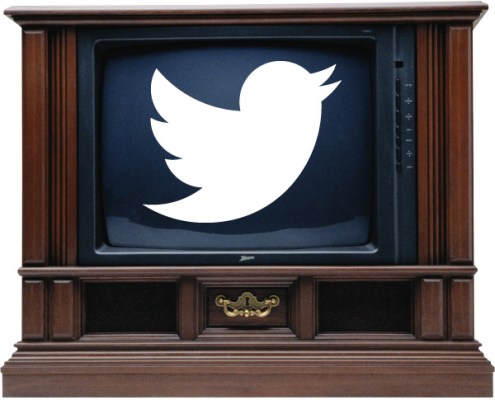Twitter CEO Dick Costolo today hinted at several upcoming features for the social media platform, including plans to address cyberbullying and better ways to filter the “signal from the noise” during live events, including something he referred to as a “DVR mode” for Twitter. These comments were made during a moderated panel this morning at the Center for Technology Innovation at Brookings.
On the subject of cyberbullying, Costolo spoke of ongoing experiments with technological solutions that would better filter out “egregious, obvious harassment,” noting that the challenge facing the company is in finding a scalable solution to that problem. Twitter today has more than 200 million active users every month, and the addition of celebrities, athletes, politicians and others the CEO dubbed “VIT’s” — “very important tweeters” — dramatically increase the usage of Twitter.
But even though the public nature of Twitter’s platform alleviates some of the potential for cyber bullying, Twitter also allows users to be anonymous, which can be a problem at times. On the one hand, anonymity makes it possible for people to express political commentary, but on the other, Costolo admitted it could also allow for trolling.
Twitter has to do a better job on the “Connect” stream to clean up the abusive, repeat and trolling posts, he said.
The CEO also talked about the challenge Twitter faces during live events. Early adopters will remember, of course, that the biggest problem used to be simply keeping Twitter online. It had once seemed like every time Steve Jobs took the stage to speak, Twitter would crash and display the infamous “fail whale” message indicating the service was down.
These days, the problem is no longer about stability, but making sense of all the data that flows in real-time.
“That ability to track and monitor the moments within an event, either as they happen or to catch up with them, is something we want to enhance,” said Costolo. “We want to make that experience even better, curating the moments within the event, the media from it, and making it that much easier to navigate.”
Costolo talked about how Twitter had tried, during the last Olympics, to curate and highlight tweets from athletes and news commenters, for example, but found that solution lacking. “The amazing thing about that was that you lost the roar of the crowd,” he said. Twitter no longer felt like the town square it aspires to be, but became more of an aggregator. That’s something which, later in the talk, Costolo explained is not Twitter’s role.
“We’re not in the business of synthesizing and analyzing,” he said of the data on Twitter. “It’s the journalists and the news organizations in the world who will take all this info and analyze and curate it as they’ve always done,” he explained.
To address the signal from the noise problem, Twitter is experimenting with a new live events tool that aims to keep that “roar of the crowd,” while still highlighting the key moments. Right now, keeping track of live events on Twitter is very basic — you’re essentially just following the tweets in reverse chronological order, the CEO explained.
“It would be nice to see things like a graphic of spikes in the conversation, what time they happened…and be able to scroll back to that time to see what happened at that particular moment,” he said. And for planned events, like televised events, Costolo added that Twitter would like to offer that same functionality to users, even if they’re watching the event on a delayed basis. He described this as being able to “follow along with Twitter in a DVR mode.”
That feature, likely birthed out Twitter’s acquisition of social TV analytics service Bluefin Labs, is still in the testing phase but fits in with Twitter’s broader goal to become the default “second screen” application. In recent weeks, the company has launched TV ad targeting for Promoted Tweets, also powered by its acquisition of Bluefin Labs. And it announced broadcast partnerships with BBC America, Fox, Fuse and The Weather Channel, allowing networks to promote TV clips, as well as other deals with cable networks and content publishers. Plus, it partnered with Nielsen for Twitter TV ratings, too.
Costolo today touted Twitter’s position as the go-to second screen app, saying that if he’s watching a major event on television and doesn’t have Twitter on hand, he feels like he’s “watching [TV] with the volume off.”
